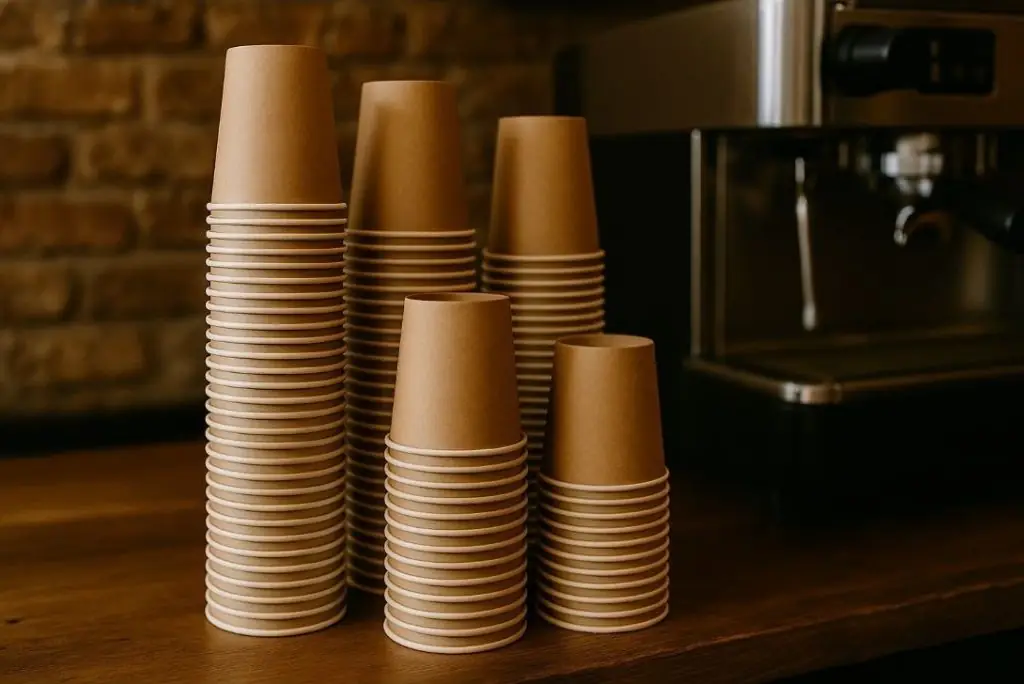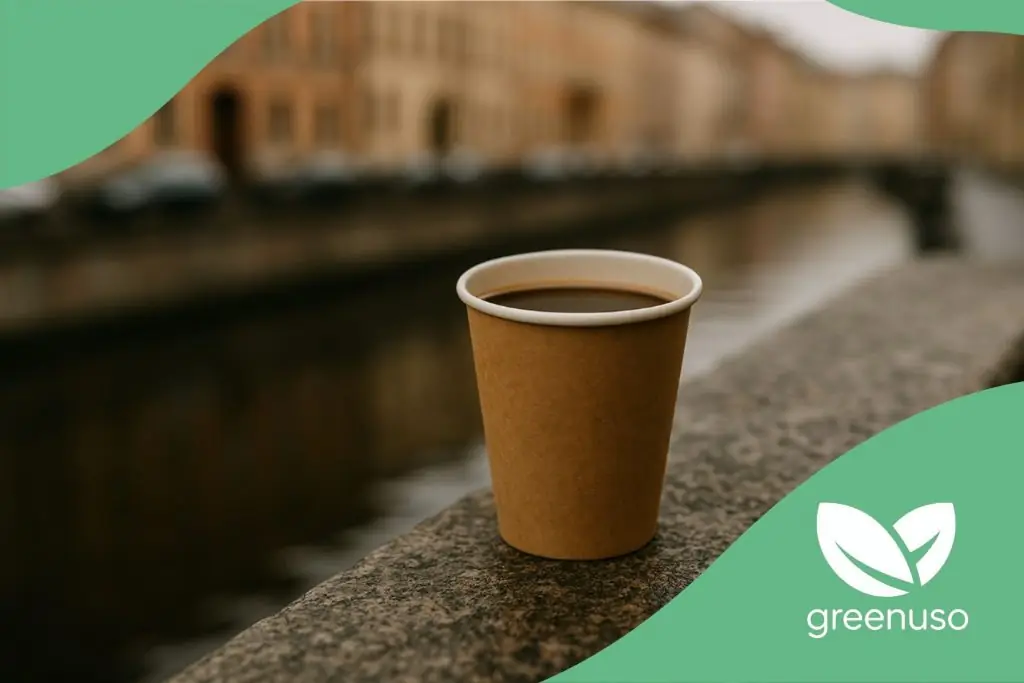Paper and cardboard cups are among the most commonly used products across the food and beverage industry, particularly at events and in establishments such as cafés and restaurants. However, their excessive use has led to a significant environmental impact. This is mainly because most of these containers end up in landfills and are not properly recycled.
That’s why Greenuso offers what is undoubtedly the most sustainable option on the market when it comes to disposable cups. In this article, you’ll learn how to recycle them correctly, debunk common myths, and understand the realities behind paper cups recycling. Interested? Then read on!
The Importance of Recycling Paper Cups
Paper cups recycling plays a crucial role in today’s world. As awareness of waste reduction continues to grow, using recycled paper cups is becoming the preferred option. These materials have a lower environmental impact (especially when they enter the recovery chain). They decompose more easily and are more compact.
Differentiating Paper Cups, Cardboard Cups, and Other Materials
There are several types of disposable cups designed to meet different needs. You’ll find a wide range of materials, such as cardboard, paper, and plastic. Here are the most common:
- Cardboard cups: These are the most cost-effective option and are very durable. They are particularly popular for outdoor events, as they are lightweight and easy to transport. Their insulating properties make them ideal for serving both hot and cold beverages.
- Paper cups: Also an affordable and safe alternative, though not as sturdy as cardboard ones. This makes them unsuitable for hot drinks.
- Plastic cups: These are the most widely used disposable cups. Available in a variety of sizes and colours, they are generally more durable and robust than paper or cardboard options.
Common Myths About Paper Cups Recycling
Despite increased awareness about recycling, many people still struggle with correctly sorting waste. Spain has been recycling for years, but confusion remains around certain issues. Here are the most common myths:
Myth 1 – All paper cups are 100% recyclable
Eight out of ten people in Spain believe that paper cups are fully recyclable. The same assumption exists around the globe. Most people think the cup they use for coffee will be recycled, simply because it’s made of cardboard. However, nothing could be further from the truth.
These containers are not made of just cardboard. Since cardboard disintegrates when in contact with liquids, it must be lined with plastic. Typically, a thin layer of polyethylene or polypropylene is added. While this makes the cup suitable for holding beverages, it also makes recycling more complex.
Myth 2 – Paper cups cannot be recycled if they contain beverage residue
This is false. When paper cups arrive at a recycling facility, they are placed in a tank of water. Soaking helps separate the plastic lining from the cardboard. Once the plastic is removed and the cardboard is dried, it is sent to paper recyclers. There, the material is turned into paper reels, which can later become new products.
Realities of Paper Cups Recycling
Paper cups were long considered unsuitable for recycling alongside other materials, but that view is changing. Despite being made from high-quality resources, they are often incinerated due to their contact with the mouth.
Nonetheless, recycling is difficult because their surface is coated with a waterproof layer. Japanese paper companies have started collaborating with other industries to turn these cups into a new recyclable resource.
Hasegawa Makoto, Director of the Recycling Promotion Office at Nippon Paper Industries, states: “Many people don’t realise that, like milk cartons, paper cups can be recycled.” Today, several companies are implementing technologies that allow the extraction of pure cardboard fibres from cups.

How and Where to Recycle Paper Cups Properly
Recycling paper cups is an excellent way to reduce environmental impact and conserve natural resources. Although they are composed of multiple materials, cardboard is the predominant one, which makes recycling possible.
To recycle them correctly, simply place them in the designated recycling container. This streamlines the recycling process and prevents the cups from ending up in landfills or incinerators.
Tips for Effective Paper Cups Recycling
At Greenuso, their commitment to the environment is absolute. Their sustainable packaging is a perfect alternative. They even offer 20 sustainable packaging trends for the hospitality industry, which could be very useful for your business.
As part of their advocacy, Greenuso recommends the following:
- Set up a recycling area: It may seem obvious, but many people don’t have a designated space for recycling.
- Sort and flatten packaging properly: Be clear about which type of packaging goes in which bin. Sometimes, parts of the same item belong in different containers.
- Flatten boxes before binning: This ensures they take up less space. Start applying the three Rs — Reduce, Reuse, and Recycle — and be kinder to the planet.
Choose Responsible Consumption
Paper cups can have a second life if properly recycled. It’s essential to promote reduced use of disposable cups and encourage more sustainable alternatives, such as reusable containers.
Remember: every small action counts when it comes to protecting the environment, and recycling is one meaningful way to contribute to a more sustainable future.

